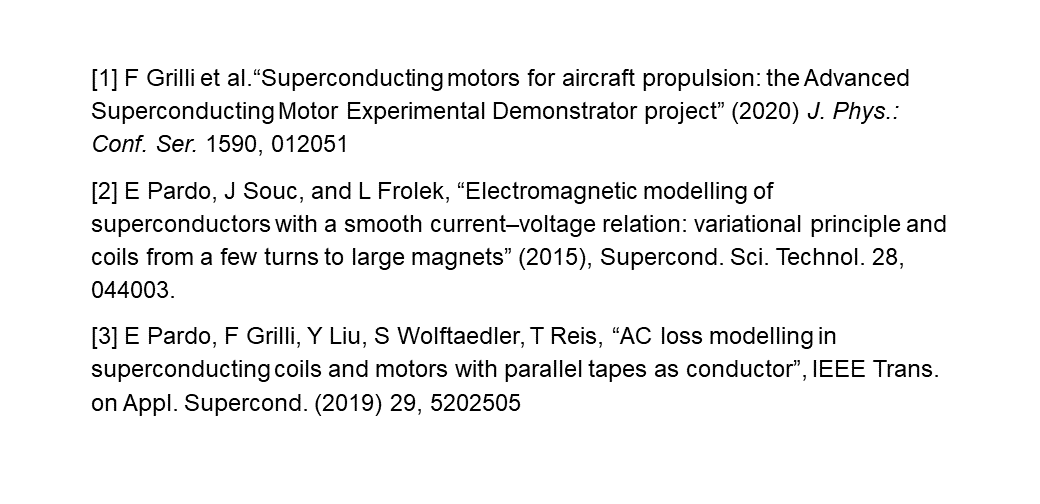AP7-4-INV
AC loss in the REBCO stator of a 1 MW motor for aviation
Dec.2 16:40-17:10 (Tokyo Time)
Institute of Electrical Engineering, Slovak Academy of Sciences, Slovakia1
Karlsruhe Institute of Technology, Germany2
Oswald Elektromotoren GmbH, Germany3
Superconducting motors and generators are very promising for air-borne applications, thanks to their high power-over-weight ratio. Stators made of 2G high-temperature superconductors (HTS) containing multi-tape conductors cause high AC loss, which needs to be reduced. In this work, we present several strategies to reduce the AC loss, supported by modeling and experiments. For the model, we use the final design of a 1 MW motor with distributed winding for airplane propulsion [1]. Modeling combines a commercial finite-element method and a self-programmed method [2] for the non-linear eddy currents in the superconductor [3]. We also further developed a self-programmed method for the whole motor, including the non-linear iron parts and rotor, showing good agreement with the previous method. In order to benchmark the models with experiments, we also measured the AC loss by electrical means in multi-tape REBCO coils from 18 to more than 500 Hz. For this purpose, we measured the AC loss at temperatures down to 25 K obtained with an innovative cryocooler-based set-up using solid nitrogen. Modeling results show that, due to the distributed winding geometry of the stator, using parallel-tape conductors with tapes isolated along their length reduces the AC loss to the theoretical limit of ideally transposed cables. Thanks to this and other strategies, REBCO stators are able to experience very low AC loss without striations or using complex transposed wires. Other factors, such as tape homogeneity may play a more important role. In addition, measurements show that the residual magnetism of the Hastelloy(R) substrate causes an essential contribution to the AC loss at the coil self-field, and possibly also in the motor configuration.
Keywords: Superconducting motors, AC loss, numerical modeling, AC measurements
